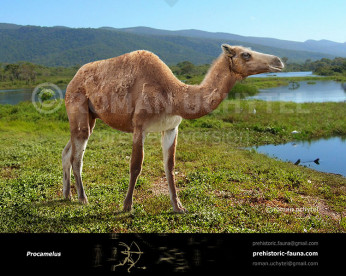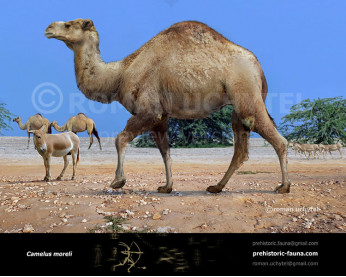Paracamelus
496496
Paracamelus (†Paracamelus (Schlosser, 1903))
Order: Artiodactyla
Family: Camelidae
Time period: Late Miocene through Pleistocene 7.5–6.5 mya (North America and Eurasia)
Size: 3 m in length, 240 cm in height, 800 - 1400 kg of weight
Typical representative: Paracamelus gigas Schlosser, 1903
Paracamelus is an extinct genus of camel in the family Camelidae. It originated in North America during the Middle Miocene.
The earliest fossil of Paracamelus is from the Middle Miocene Esmeralda Formation in Nye County Nevada and is between 10–12.5 million years old. After a sea level transgression event, the genus spread to Eurasia arriving in Spain and Italy at approximately 6 Ma, before spreading to Africa around the Miocene-Pliocene boundary.
Its later range spanned from Spain and Italy to Chad and Shanxi Province, China. It is ancestral to living camels of the genus Camelus. A population remained in northern North America, which became the high Arctic camel, which survived until the Middle Pleistocene approximately 1 Ma.
Payment
You may use multiple payment methods to buy image such as credit cards, PayPal and bank transfer.
Paracamelus (†Paracamelus (Schlosser, 1903))
Order: Artiodactyla
Family: Camelidae
Time period: Late Miocene through Pleistocene 7.5–6.5 mya (North America and Eurasia)
Size: 3 m in length, 240 cm in height, 800 - 1400 kg of weight
Typical representative: Paracamelus gigas Schlosser, 1903
Paracamelus is an extinct genus of camel in the family Camelidae. It originated in North America during the Middle Miocene.
The earliest fossil of Paracamelus is from the Middle Miocene Esmeralda Formation in Nye County Nevada and is between 10–12.5 million years old. After a sea level transgression event, the genus spread to Eurasia arriving in Spain and Italy at approximately 6 Ma, before spreading to Africa around the Miocene-Pliocene boundary.
Its later range spanned from Spain and Italy to Chad and Shanxi Province, China. It is ancestral to living camels of the genus Camelus. A population remained in northern North America, which became the high Arctic camel, which survived until the Middle Pleistocene approximately 1 Ma.

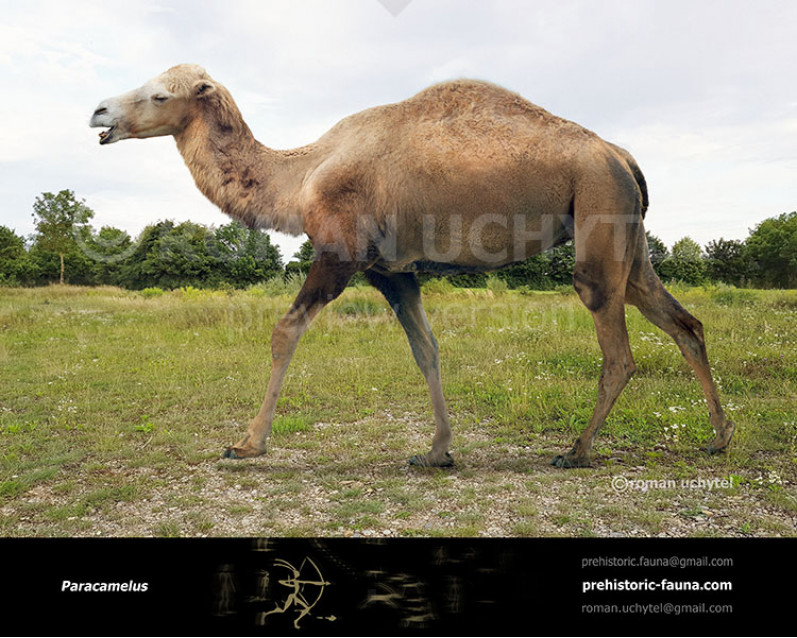
-797x638.jpg)
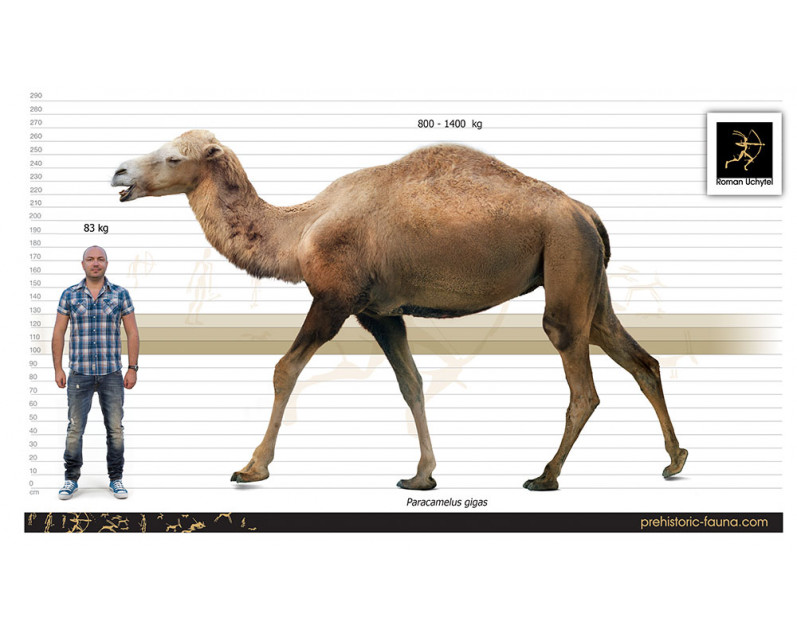

-70x56.jpg)

-346x277.jpg)
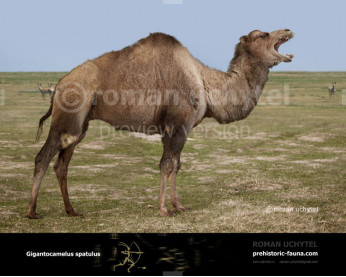
-346x277.jpg)
-346x277.jpg)
